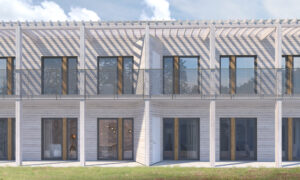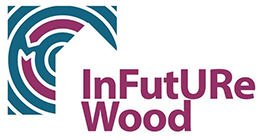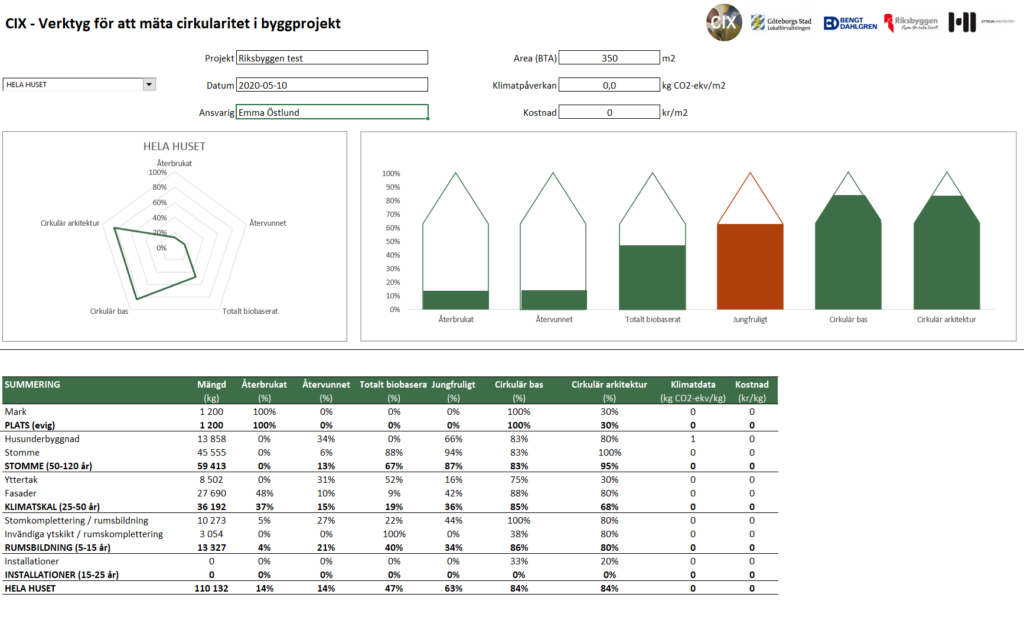Sweden 2020. The construction and demolition industry creates 10 million tonnes of waste every year – that is more waste than from all Sweden’s households put together. By starting out from an apartment-building that Riksbyggen builds on a recurring basis, ETTELVA (an architectural company) together with Bengt Dahlgren (consulting company) and Gothenburg Municipality, has identified solutions that increase service life, create variation in the possible usage of the house, while focusing on the materials prerequisites for recycling in the next use cycle. “In this way, we can build houses with flexible solutions that minimise the use of resources over time” says Emma Östlund, director of sustainability at ETTELVA Architects.
 These suggestions for adaptations have been summarised in theoretical alternatives of the house, so-called test beds. “We have found that shafts in the core of the building are important areas for creating customisable and unprogrammed surfaces. The elements that are often torn out and rebuilt have been minimised and material choices that last over time have been prioritised. Through thoughtful, conscious choices and well thought out design priorities, circularity can be increased.”
These suggestions for adaptations have been summarised in theoretical alternatives of the house, so-called test beds. “We have found that shafts in the core of the building are important areas for creating customisable and unprogrammed surfaces. The elements that are often torn out and rebuilt have been minimised and material choices that last over time have been prioritised. Through thoughtful, conscious choices and well thought out design priorities, circularity can be increased.”
Riksbyggen is a Swedish housing company founded in 1940 by trade unions in the construction sector as a response to the current housing crisis and unemployment among construction workers, owned by the building unions, housing association and by other national co-operative associations.
The experience of the project has been summarised in a tool for measuring and reporting building circularity; the CIX-tool. The tool includes the project’s important lessons in circular methods and materials with the goal that it will be utilised by housing developers, municipalities, architects and consultants in the construction sector. The tool’s overall approach to circularity is to create the conditions for more circular building projects in the design phase. With the help of the tool, the process of measuring and following up the circularity of buildings is facilitated and made more transparent.
CIX – Circularity indicators
The tool includes measures of elasticity, generality, flexibility, and design for deconstruction as well as built-in materials that are reused, recycled and biobased. Below is one example of visualising the result of such an evaluation. Beside the information on circularity CIX aim to show information about the climate impact and the costs of each choice.
The tool has two indicators based on essential aspects of circular economy in building design called “Circular base” and “Circular architecture”. Examples of important circular aspects which is evaluated in the circular base is an updated documentation of built in materials, waste minimization, lifespan of different materials taking into account the technical aspects of the building and various building components and their aesthetic longevity. Circularity for buildings can also be created through architecture. Here indicators for circular architecture have been specified with adaptability through elasticity, flexibility and generality. “Circular architecture” also includes evaluation of the possibility to deconstruct for possible repair and reuse in the next cycle of use. The projects ability to adapt the design and decision-making process to enable use of available reused materials is also evaluated. The tool also handles quantity of reused, recycled and bio-based materials.
ETTELVA Architects and Bengt Dahlgren are now developing a digital version of the tool, with the aim of making it available to anyone who wants to evaluate the circularity of their projects and buildings, says Emma Östlund.
We hope to collaborate with ETTELVA in the near future, it would be great to see “biobased reused” and “biobased recycled” as options as well!



